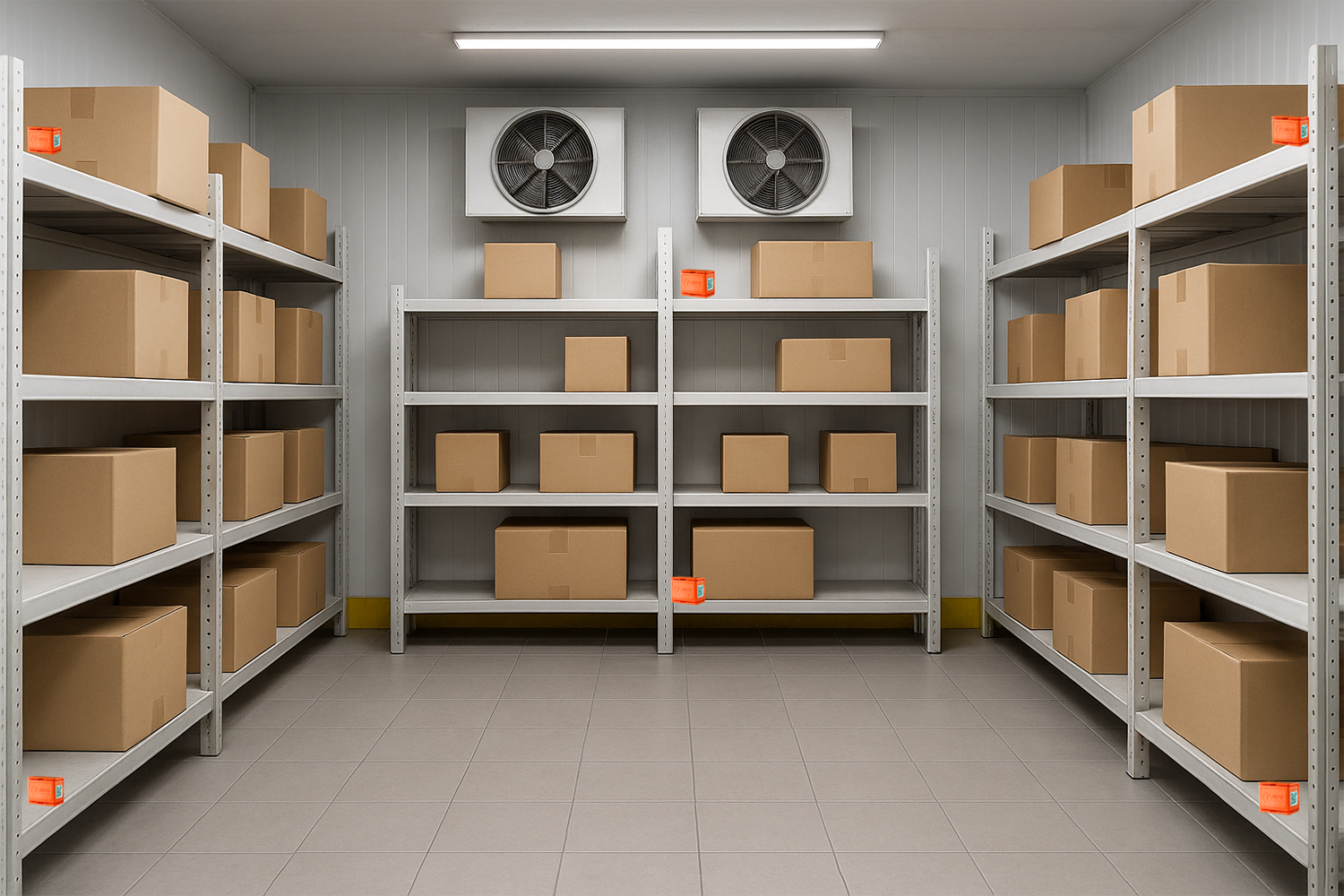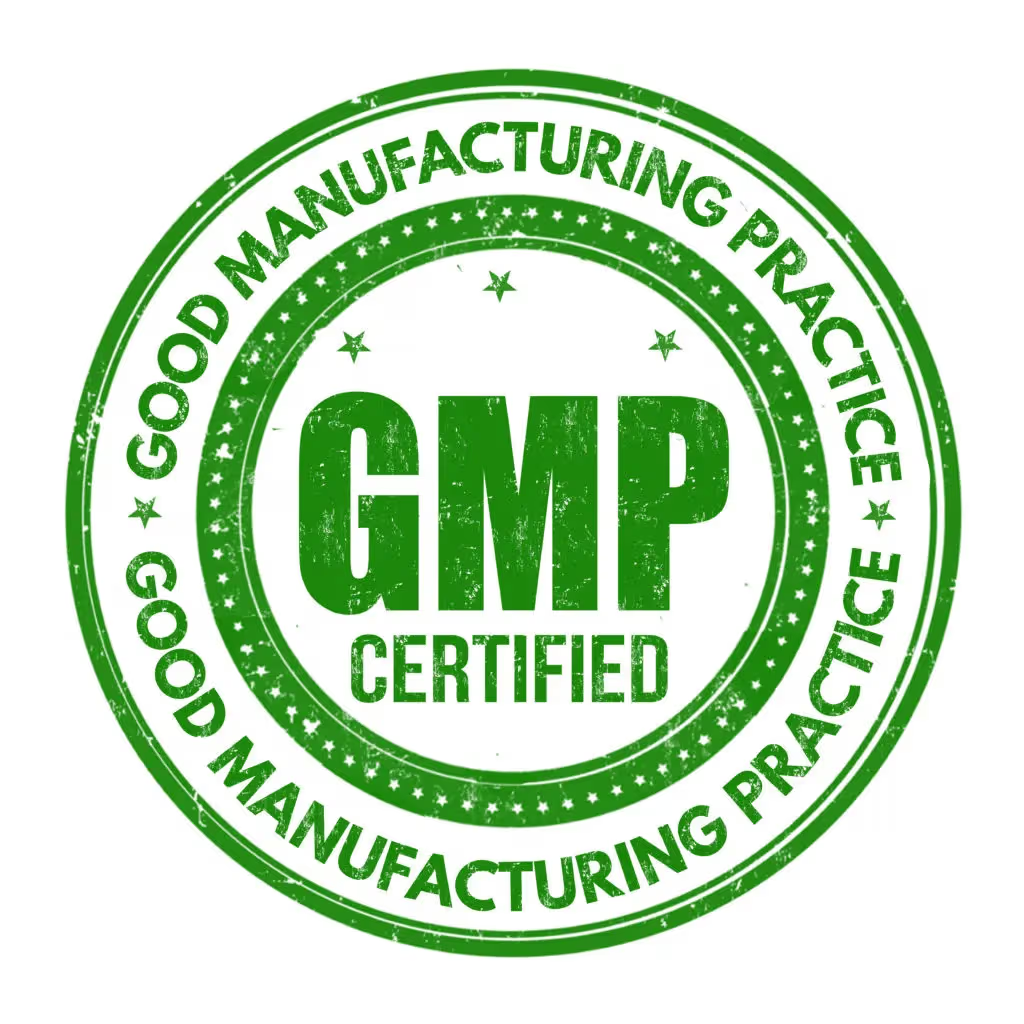Mapping service for temperature and humidity
At ViGIE, we provide a comprehensive mapping service designed to validate and document the temperature and humidity distribution within your storage or process environments. Ideal for regulated industries, our methodology ensures you maintain control of environmental conditions, identify critical zones and support compliance with standards such as GMP, GDP and other quality frameworks.
How our mapping process works and what you gain
Our mapping service is designed to be fast and low-touch for your team. With minimal effort on your side, we capture a complete picture of your environment and highlight potential risk zones clearly and quickly.

- Drop-in wireless loggers: Calibrated temperature and humidity data loggers can be placed immediately—no pre-configuration required—for continuous recording.
- Robust radio performance: Reliable signal strength enables monitoring inside refrigerators and freezers.
- Rugged, weatherproof devices: IP67 data loggers also support outdoor deployments.
- Clear point allocation: A floor plan visualization shows each measurement position for unambiguous traceability.
- Accredited calibration: ISO/IEC 17025–accredited calibration ensures high accuracy and long-term stability.
- Real-time transmission, no IT access needed: Data is sent over the GSM network—no connection to your internal IT is required.
- Zero-install web app: Access your project online without any local installation.
- Compliance-ready reporting: Receive a comprehensive report with hot/cold spots, averages, MKT, tables, charts, and ISO 17025 certificates.
- Optional pre-study: A PRE-Mapping phase helps surface and correct vulnerabilities before the formal campaign.
Our benefits
No equipment purchase
Use our measurement systems and preserve capital, no upfront hardware investment.
GMP-compliant documentation
Detailed analyses and certificates aligned with GMP expectations.
FDA 21 CFR Part 11–ready
Automated, tamper-evident workflows keep data unaltered and compliant.
Preventive PRE-Mapping
Fix issues early to streamline the official mapping and avoid rework.
Global execution
We can map your facilities worldwide without you having to be on site yourself.
IT-independent radio network
Our self-contained communications operate without your internal Wi-Fi or infrastructure.
Our mapping packages
Explore ViGIE’s tailored temperature (and optional humidity) mapping packages—flexible solutions designed to match your operational needs and compliance requirements. All sensors come with traceable or ISO/IEC 17025–accredited calibration upon request.
Self-Service Package
Ideal for teams with internal resources who want full control of their mapping project.

We supply all the required equipment and software access.

You share your floor plan or specify the number of measurement points, we’ll help you define optimal placement.

We deliver the agreed quantity of ViGIE wireless data loggers along with any necessary accessories (e.g., access point, router) and system access.

You install the sensors at your chosen positions and conduct the mapping study independently.

The platform automatically generates your documentation and report—ready for internal validation or audits.
Light Service Package
Perfect if you prefer to place sensors yourself but want ViGIE to handle the data analysis and reporting.

Send us your layout or measurement requirements, and we’ll confirm the optimal number and placement of sensors.

We ship the necessary wireless data loggers to you.

You position the sensors and inform us of your desired start and end dates.

Our team processes the collected data and prepares a full GMP-compliant report, complete with graphics, tables, and summary statistics.

Optionally, we can personalize your report with your company logo, floor plans, and other branding details.
Full-Service Package
The all-inclusive, hassle-free option—ViGIE manages the entire process for you.

You simply share your floor plan or required measuring points.

A ViGIE technician designs the mapping layout, installs the sensors, and oversees data collection.

We analyze all results and prepare the final validation report in full compliance with GMP and regulatory standards.

Key Factors to Consider in Temperature Mapping
Maintaining product quality requires consistent storage temperatures within defined limits. Even minor deviations can compromise sensitive goods, and in many storage areas, temperature differences of 10 °C or more are not uncommon. Effective mapping helps uncover these variations—but several factors influence the results:
Facility size – Smaller storage areas (e.g., 125 m³ or 5 × 5 × 5 m) are generally easier to stabilize than large warehouses spanning thousands of cubic meters.
Load conditions – A fully stocked facility exhibits a different thermal profile than a nearly empty one due to variations in air flow and thermal mass.
Layout and furnishings – The placement of shelves, pallets, partitions, and other structures affects air circulation and can create warmer or cooler microzones.
Position within the space – Temperatures tend to be more stable at the center of a warehouse, while peripheral areas and corners are often more exposed to fluctuation.
Seasonal influences – External climate conditions change significantly between summer and winter, and unusual weather patterns can impact indoor temperatures.
Openings – Frequent opening of loading docks, doors, or windows can lead to sudden temperature shifts and disrupt air balance.
Light exposure – Sunlight entering through windows, skylights, or glass panels can cause localized heating. Even artificial lighting can contribute unwanted heat in confined areas.
HVAC impact – Heating, ventilation, and air conditioning systems can create significant gradients, especially near air vents, fans, and diffusers.
Air convection – Since warm air rises, vertical temperature layering should be measured and analyzed as part of the mapping study.By considering these parameters in advance, ViGIE ensures your mapping results reflect real operating conditions and provide meaningful insights for optimizing storage environments.
Facility size – Smaller storage areas (e.g., 125 m³ or 5 × 5 × 5 m) are generally easier to stabilize than large warehouses spanning thousands of cubic meters.
Load conditions – A fully stocked facility exhibits a different thermal profile than a nearly empty one due to variations in air flow and thermal mass.
Layout and furnishings – The placement of shelves, pallets, partitions, and other structures affects air circulation and can create warmer or cooler microzones.
Position within the space – Temperatures tend to be more stable at the center of a warehouse, while peripheral areas and corners are often more exposed to fluctuation.
Seasonal influences – External climate conditions change significantly between summer and winter, and unusual weather patterns can impact indoor temperatures.
Openings – Frequent opening of loading docks, doors, or windows can lead to sudden temperature shifts and disrupt air balance.
Light exposure – Sunlight entering through windows, skylights, or glass panels can cause localized heating. Even artificial lighting can contribute unwanted heat in confined areas.
HVAC impact – Heating, ventilation, and air conditioning systems can create significant gradients, especially near air vents, fans, and diffusers.
Air convection – Since warm air rises, vertical temperature layering should be measured and analyzed as part of the mapping study.By considering these parameters in advance, ViGIE ensures your mapping results reflect real operating conditions and provide meaningful insights for optimizing storage environments.
Background: Why Temperature Distribution Studies Matter
In today’s highly regulated industries, manufacturers and distributors must understand exactly how their processes and environments affect product quality and, ultimately, consumer safety.
Standards such as GMP (Good Manufacturing Practice) and GDP (Good Distribution Practice) define strict requirements to ensure product integrity throughout production, storage, and transport—covering pharmaceuticals, active ingredients, medical products, cosmetics, food, and animal feed.
Regulatory bodies around the world closely monitor temperature control within warehouses, cold rooms, distribution centers, and other controlled environments. In this context, temperature mapping—the systematic verification of temperature distribution and stability across a storage area—plays a critical role in demonstrating compliance.
For temperature-sensitive goods, mapping studies are typically part of a Validation Master Plan (VMP) or specific qualification or test protocol, defining when, where, and how such assessments should be carried out to meet regulatory and quality assurance expectations.
Standards such as GMP (Good Manufacturing Practice) and GDP (Good Distribution Practice) define strict requirements to ensure product integrity throughout production, storage, and transport—covering pharmaceuticals, active ingredients, medical products, cosmetics, food, and animal feed.
Regulatory bodies around the world closely monitor temperature control within warehouses, cold rooms, distribution centers, and other controlled environments. In this context, temperature mapping—the systematic verification of temperature distribution and stability across a storage area—plays a critical role in demonstrating compliance.
For temperature-sensitive goods, mapping studies are typically part of a Validation Master Plan (VMP) or specific qualification or test protocol, defining when, where, and how such assessments should be carried out to meet regulatory and quality assurance expectations.


For which industries do we offer temperature distribution studies?
ViGIE provides temperature mapping for any environment where precise climate control is vital for product quality and compliance.
Key sectors include:
Pharmaceutical & Life Sciences – medicines, vaccines, APIs, and stability chambers under GMP/GDP standards.
Food & Beverage – perishable products requiring strict temperature control during storage and transport.
Cosmetics & Chemicals – products where stability depends on consistent conditions.
Across all industries, effective Cold Chain Management (CCM) ensures continuous, traceable temperature control from production to delivery.
Key sectors include:
Pharmaceutical & Life Sciences – medicines, vaccines, APIs, and stability chambers under GMP/GDP standards.
Food & Beverage – perishable products requiring strict temperature control during storage and transport.
Cosmetics & Chemicals – products where stability depends on consistent conditions.
Across all industries, effective Cold Chain Management (CCM) ensures continuous, traceable temperature control from production to delivery.

How often should mapping be performed?
Frequency depends on your processes and regulatory needs.In pharmaceuticals, mapping is typically done twice a year, in summer and winter, to capture seasonal variations.Other sectors may adjust frequency based on equipment changes, new layouts, or risk assessments.

What is Pre-Mapping and why is it important?
Pre-Mapping is a test phase before the official study, helping detect issues like temperature fluctuation or poor air flow early.Unlike conventional methods, ViGIE’s real-time system lets you identify and correct weaknesses immediately, without retrieving devices, saving time, cost, and effort before final validation.
Present in 24 countries around the world
Don't settle for a system that's holding you back
If you made it this far, it's time to consider a smarter solution. Discover why healthcare providers worldwide are choosing ViGIE to transform their facilities monitoring. Let us help you move forward with confidence.
Oops! Something went wrong while submitting the form.



